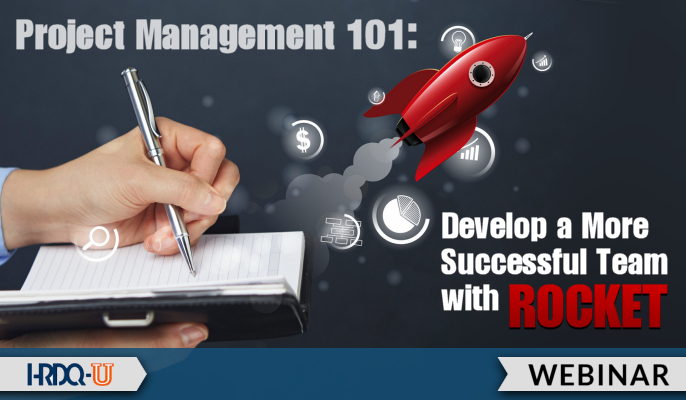- 827 Lincoln Ave. #B-10 West Chester, PA 19380
- support@hrdq.com
- +1-610-279-2002
Quick Links
Menu
Featured Topics
Menu
Total Results
We could not find what you're looking for. Please try again.No Record Found

Project management seems complicated and scary, but it is FUN! Really! Project management is a critical aptitude that can be used by anyone who knows the four steps, including L&D (learning and development). It’s just common sense. You can’t get projects done if you are unable to get the right people, objectives, and influencer (for example, project sponsor). When teams are working together, whether virtual or face-to-face, simple project steps keep teams glued together and effective.
In this interactive webinar, you will learn how to:
Projects start with people who need something done. In business, we have to balance key criteria: quality, speed, and realism. You’ll never get everything you want done, but you will learn how to prioritize these three.
We use four key phases to identify the four parts of a simple project: Define (Sketch the Charter), Plan (Build the Pieces), Manage (Work with Others/Compromise), and Review (Learn from the Past). We also remind ourselves that the same first four letters (DPMR) can be used to DARE to PROPERLY MANAGE RESOURCES on all the work we do.
We recommend project management webinars.


Lou Russell is the director of learning services at Moser Consulting. As an executive consultant, speaker, and author, she channels her passion to create growth in companies by growing their people. Lou inspires greatness in leadership, projects, and teams. She is the author of popular books on leadership, teams, and project management. Lou blends her stories with practical ideas, so you solve complex problems. Encouraged by Lou’s upbeat and practical style, you’ll leave with new tools and renewed hope. You will be laughing, participating, and challenged. Most importantly to Lou, you will learn.
Connect with Lou on Facebook and at https://learning.moserit.com/.
Training Tools for Developing Great People Skills
This event is sponsored by HRDQ. For 45 years HRDQ has provided research-based, off-the-shelf soft-skills training resources for classroom, virtual, and online training. From assessments and workshops to experiential hands-on games, HRDQ helps organizations improve performance, increase job satisfaction, and more.
Learn more at HRDQstore.com

“I used to struggle when I had to work on a project but after this webinar, I should be fine, the presenter made this very simple and easy to work on!”
Miriam V.
UITS Finance Office
University of Arizona

“Thank you for offering this opportunity for professional development! I am looking to transition to Project Management from HR and this was an excellent 101 course. I will definitely use the knowledge and skills I acquired during this webinar in my work in the future.”
Chloë E.
HR Specialist
Arizona State University

“This was a great presentation on Project Management that kept things simple with a great Project Charter Template to keep the team on target to meet the goal.”
Helen S.
Consultant
Methodist Le Bonheur Community Outreach

Sign up to be notified of upcoming live webinars, in-depth workshops, podcasts, blog posts, promotions and much more. Stay ahead of the curve and subscribe for FREE today!